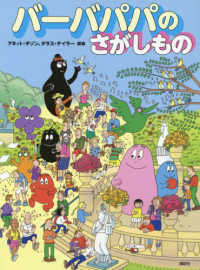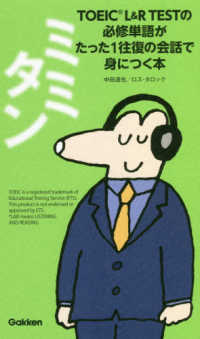- ホーム
- > 洋書
- > 英文書
- > Cinema / Film
Full Description
How twentieth-century developments in science influenced the aesthetics of the burgeoning American cartoon
What do technical renderings of plant cells in trees have to do with Disney's animated opus Fantasia? Quite a bit, as it turns out: such emergent scientific models and ideas about nature were an important inspiration for Disney's groundbreaking animated realism. In Drawn to Nature, Colin Williamson presents a vivid portrait of how developments in biology, physics, and geology between 1900 and the long 1960s influenced not just Disney but the American cartoon industry as a whole.
Drawing on original research on the scientific appetites of animators and studios such as Winsor McCay, the Fleischer Brothers, Walt Disney, and United Productions of America, Williamson opens new avenues for understanding the history and aesthetics of cartoons. Interrogating the differences between art and science and reconsidering the realms of dream, magic, and fantasy as they pertain to pop culture, he yields novel proposals for bridging longstanding divides between animation, live-action cinema, and the history of science.
Drawn to Nature not only illuminates the extent to which animators have drawn on scientific insights, it also considers seriously how commercial animations themselves participate in scientific discourse. It revises and revitalizes our existing narratives about the history of American animation to uncover the many ways science informs our collective cultural imagination.
Contents
Contents
Introduction: A Skirmish with Nature
1. Anxious Dreams: Winsor McCay's Natural History
2. Inky Origins: Visions of Science in the Fleischer Cartoons
3. Restless Matter: Disney's Realism and the Movements of Nature
4. Nature by Design: The UPA Style and Cold War America
5. New Frontiers of Animation: Elsa Garmire's Groovy Science
Conclusion: The In-Between
Acknowledgments
Notes
Index








